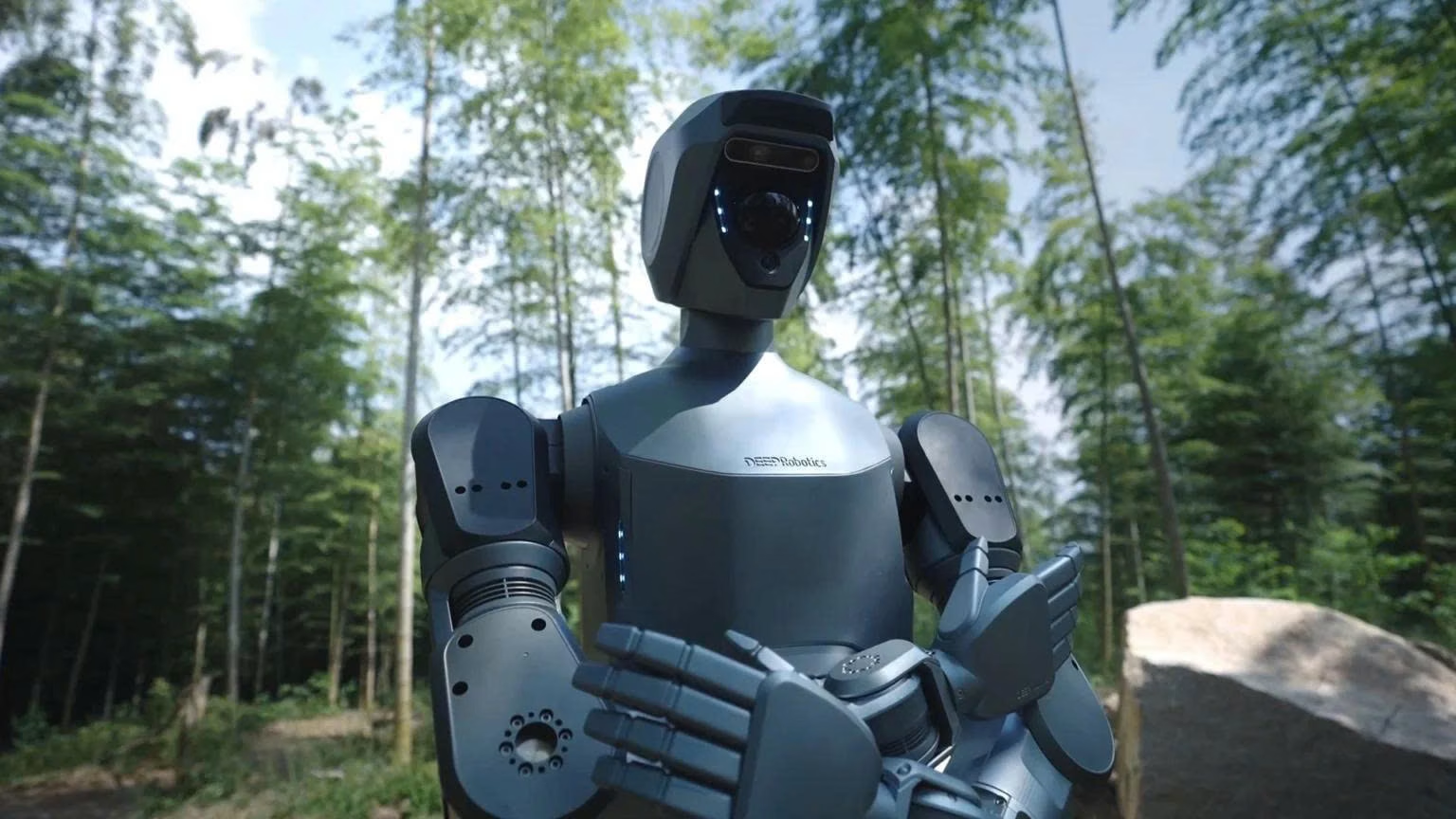Deep Robotics Unveils DR02 Humanoid, Claiming "World's First All-Weather" Robot
Deep Robotics, a prominent Chinese technology company, officially unveiled its latest humanoid robot, the DR02, in early October 2025, positioning it as a significant advancement in industrial automation. The company announced the DR02 as the "world's first all-weather humanoid robot," a claim backed by its robust IP66 waterproof and dustproof rating, designed to operate in extreme temperatures ranging from -20°C to 55°C (-4°F to 131°F). This launch underscores China's broader national strategy to accelerate the mass production of humanoid robots by the end of 2025, aiming to drive industrial innovation and manufacturing dominance.
Rugged Design Meets Advanced Capabilities
The DR02 is engineered for demanding real-world industrial environments, a stark departure from more entertainment-focused humanoid models. Standing at 175 cm (approximately 5.7 feet) tall, it boasts a carrying capacity of up to 20 kg, making it suitable for collaborative tasks in factories, cold storage facilities, hot workshops, or even outdoor sites. The robot's integrated computer provides 275 Trillions of Operations Per Second (TOPS) for powerful AI processing, supported by a multi-sensor perception system. This system enhances environmental awareness, balance, and agility, allowing for dynamic movements and interaction on uneven terrain.
Its modular structure is another key differentiator, facilitating easy customization and maintenance, which is crucial for continuous operation in challenging settings. Deep Robotics emphasized that the DR02 is built for agility, dynamic balance, and practical, real-world collaboration, potentially patrolling streets or performing tasks in rain-soaked or dusty conditions where other humanoids simply can't operate. Such a focus marks a clear strategic move by Deep Robotics from its previous quadruped robot designs into the bipedal humanoid space, prioritizing durability and functionality.
China's Robotics Ambition and Market Reception
The introduction of DR02 aligns seamlessly with China's government-backed vision of humanoid robots as a "disruptive product" and a vital engine for industrial growth. Reports indicate a push for mass production goals by late 2025, with companies like Deep Robotics at the forefront. While no official pricing has been released, the robot is clearly aimed at industrial buyers, and some market observers on social media speculate it could be positioned as a cost-effective solution for widespread adoption within this framework. Its availability for purchase or deployment is slated for late 2025, in line with these national ambitions.
Community and expert reactions to the DR02 have been largely positive. Posts across platforms like X (formerly Twitter) highlight its IP66 rating and temperature resilience, with many noting its capabilities "beyond what most humans can handle" for industrial use. Views on related posts have soared, indicating high public interest. Robotics experts, too, have lauded its modular design and ability to withstand harsh environments as a game-changer for sectors like manufacturing and logistics. They often compare it to competitors like Unitree Robotics' H2, noting DR02's distinct edge in weather resistance over models that might be more focused on demonstrations or "dance-oriented" movements. Though some skepticism about "friendly" claims surfaced concerning Chinese robots in general, the overall sentiment leans toward awe at China's rapid advancements in this sector.
Global Implications and Future Outlook
While initially focused on domestic industries within China, the DR02's "world's first all-weather" status suggests broader global aspirations. Its design makes it appealing to international buyers in regions with harsh climates, such as the deserts of the Middle East or cold European warehouses. As of November 4, 2025, there are no confirmed regional pricing or specific adaptations for international markets, but experts anticipate such developments, pending regulatory considerations in regions like the US or EU. The DR02 is certainly part of a burgeoning competitive landscape in humanoid robotics within China, pushing the boundaries of what these machines can achieve in truly challenging, unsupervised environments.
